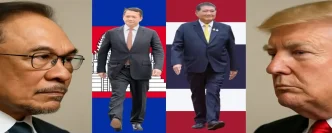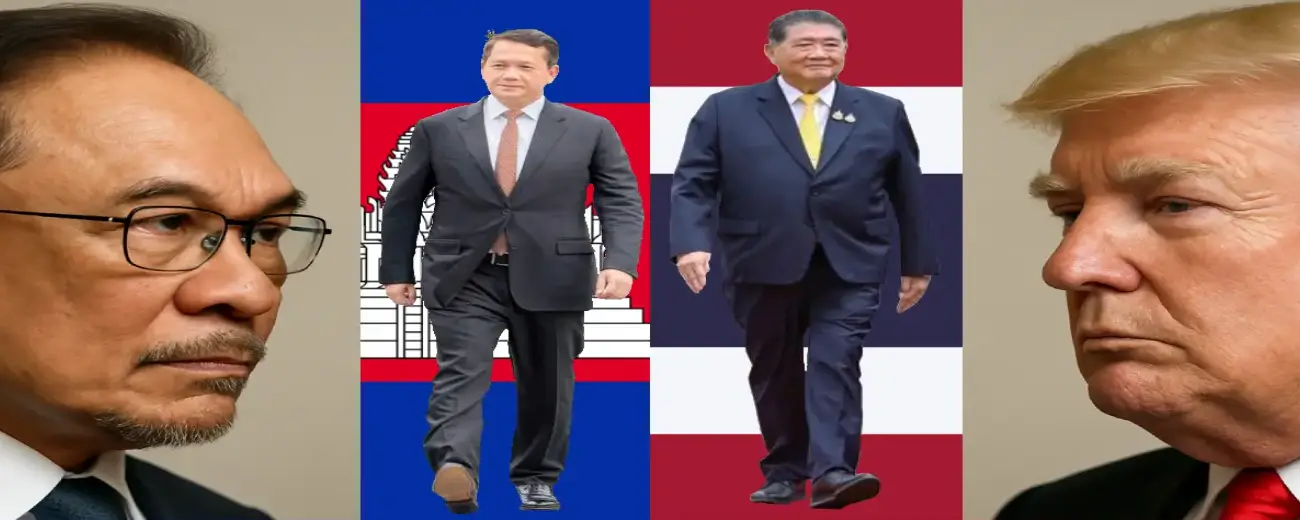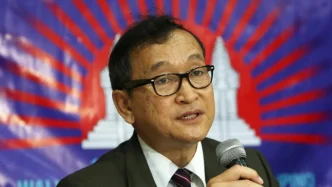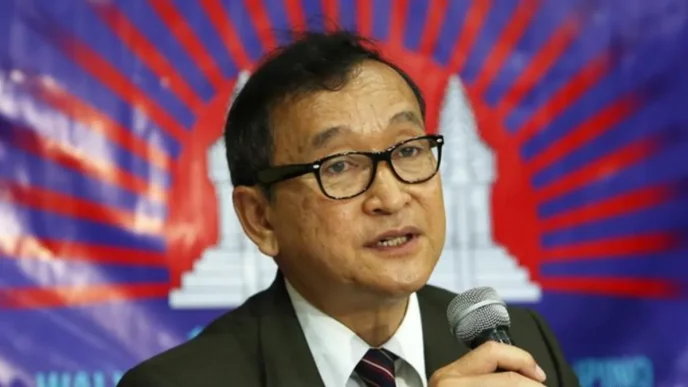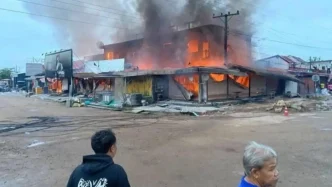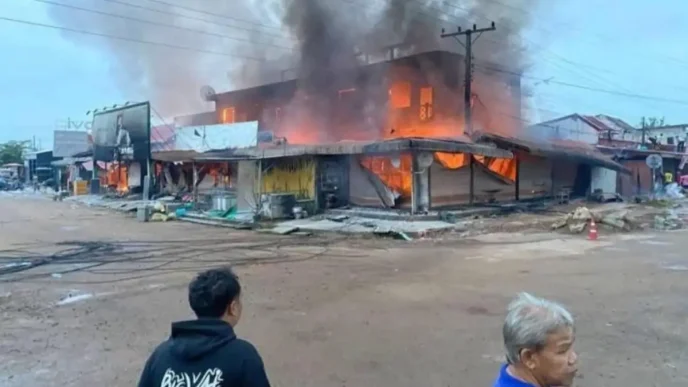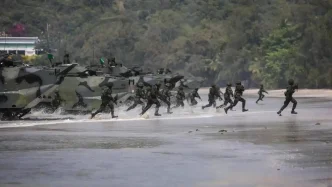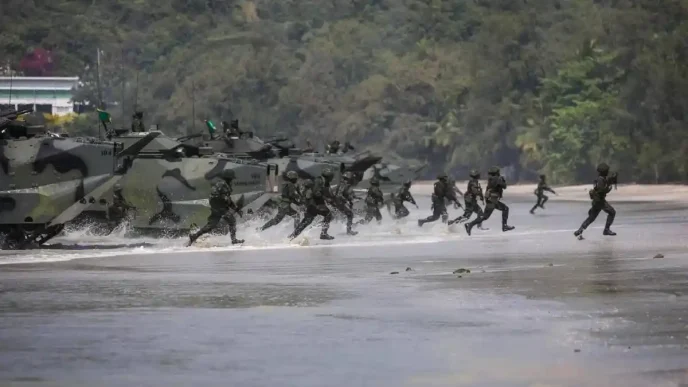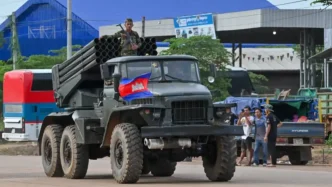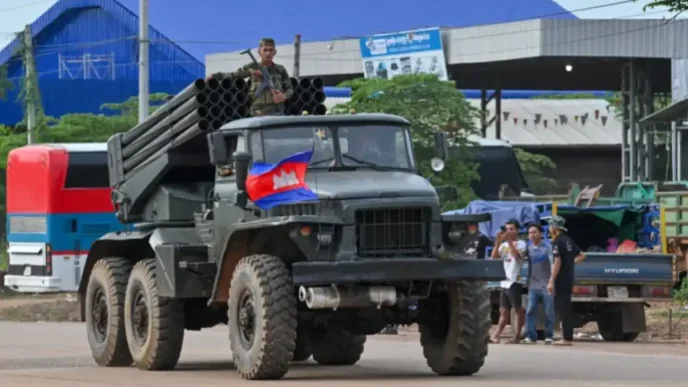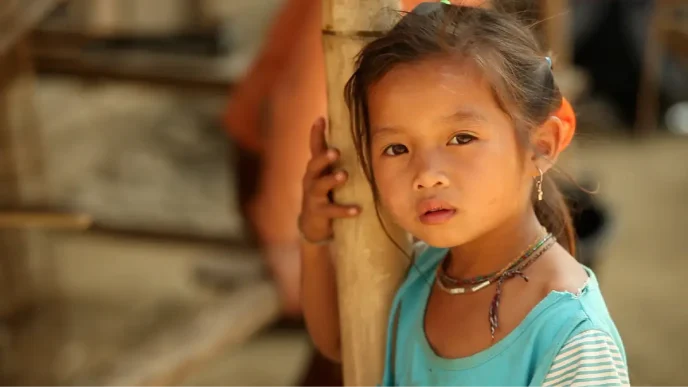After four days of intense border clashes that have left at least 33 soldiers and civilians dead and displaced thousands, Thailand and Cambodia have agreed to meet in Malaysia on Monday to negotiate a potential end to the conflict. The talks, facilitated by Malaysian Prime Minister Anwar Ibrahim, come after US President Donald Trump intervened over the weekend, urging an immediate ceasefire during calls with leaders from both nations.
Thai Acting Prime Minister Phumtham Wechayachai will lead his country’s delegation, while Cambodian Prime Minister Hun Manet is also expected to attend, according to statements from both Cambodia and Thailand governments. Despite the diplomatic breakthrough, shelling continued into Sunday, with Thai military officials reporting fresh attacks in the early hours of Sunday, 27 July 2025, by Cambodian forces on civilian areas in Surin and Ubon Ratchathani provinces.
Escalation of Violence and Humanitarian Toll
The latest round of fighting erupted on July 24, marking one of the deadliest flare-ups in recent years along the contentious border betweenCambodia and Thailand. Both nations have traded accusations over who initiated the conflict. Thailand claims Cambodian military drones conducted unauthorized surveillance of Thai troops, while Cambodia alleges Thai soldiers violated a prior agreement by advancing on a Khmer-Hindu temple, a site of historical and cultural significance that has long been a flashpoint in bilateral relations.
The violence has exacted a heavy toll. Thai military sources reported multiple artillery and rocket attacks by Cambodian forces early Sunday morning, targeting areas far beyond military zones. In Surin province, homes, medical facilities, and community centers in villages like Ban Ta Sor and Ban Nong Joob were struck, with several structures destroyed by fire. Emergency teams were deployed to contain the damage, and residents in high-risk areas were evacuated to safety zones. No civilian casualties were reported in the latest strikes, but the cumulative death toll of 33 underscores the urgency of a resolution.
Hundreds of thousands of Thai and Cambodian nationals have been displaced, fleeing border areas as the fighting intensifies. Humanitarian concerns are mounting, with aid organizations on both sides scrambling to provide shelter and assistance to those affected. The scale of displacement highlights the broader regional implications of the conflict, which risks destabilizing communities already grappling with economic and social challenges.
Diplomatic Push Amid Continued Hostilities
The decision to hold talks in Malaysia represents a rare moment of agreement between the two neighbors, whose border disputes date back over a century to the colonial era when French occupation shaped Cambodia’s boundaries with Thailand. Malaysian Prime Minister Anwar Ibrahim had previously offered to mediate, stepping in at a time when the Association of Southeast Asian Nations (ASEAN) has faced criticism for its perceived inaction. ASEAN’s traditional approach of avoiding direct intervention in member states’ conflicts has been described as inadequate by observers, leaving room for external actors like the US to influence the situation.
US President Donald Trump’s involvement has added an unexpected dimension to the crisis. On Saturday, during a private visit to his golf resort in Scotland, Trump spoke with both Phumtham Wechayachai and Hun Manet, pressing for an immediate halt to hostilities. In a post on Truth Social, Trump announced that both nations had agreed to meet and work toward a ceasefire and lasting peace. He also expressed optimism about resuming trade talks with Thailand and Cambodia once the fighting stops, referencing upcoming US tariffs set to impose a 36% tax on goods from both countries starting August 1 unless an agreement is reached.
Cambodia, whose military is considered weaker than Thailand’s and has reportedly lost ground and equipment to Thai artillery and air strikes, quickly endorsed Trump’s call for an unconditional ceasefire. Hun Manet, after his conversation with Trump, emphasized that such a move would protect the lives of soldiers and civilians alike. Thailand, however, has taken a more cautious stance. While expressing gratitude for Trump’s concern, the Thai foreign ministry stressed that a ceasefire must be accompanied by sincere dialogue with Cambodia, indicating a preference for addressing underlying issues before halting military operations.
Thai military spokesperson Maj Gen Winthai Suvaree confirmed on Sunday that Cambodian forces had not ceased fire, with shelling resuming early that morning in Surin province. Deputy spokesperson Col Richcha Suksuwanon added that frontline units would continue tactical operations unless Cambodia initiated bilateral talks, underscoring the disconnect between diplomatic overtures and battlefield realities.
Historical Tensions and Regional Dynamics
The involvement of external powers, including China’s recent commentary blaming Western colonial interference, adds another layer of complexity to an already fraught situation.
Within Southeast Asia, the conflict tests the cohesion of ASEAN, a regional bloc often criticized for its consensus-driven, non-interference policy. Malaysia’s role as a mediator, while welcomed, raises questions about why ASEAN as a whole has not taken a more proactive stance. Analysts suggest that ASEAN nations’ reluctance to address internal conflicts directly may embolden external actors to fill the vacuum, as seen with Trump’s intervention. This dynamic could reshape regional diplomacy, potentially undermining ASEAN’s centrality in managing Southeast Asian affairs.
Thailand, with its stronger military and strategic position, appears to hold the upper hand in the current standoff. Reports of Cambodian losses to Thai artillery bombardments and air strikes suggest an imbalance on the battlefield, which may explain Cambodia’s eagerness for a ceasefire. Yet Thailand’s insistence on dialogue as a precursor to de-escalation indicates a desire to address systemic issues rather than settle for a temporary truce. This approach, while pragmatic, risks prolonging the conflict if mutual trust cannot be established during the upcoming talks.
Trump’s unexpected role as a mediator has drawn mixed reactions. Just a day before his intervention, Thailand’s Foreign Minister Maris Sangiampongsa had dismissed the need for third-party mediation, suggesting a preference for direct negotiations. Trump’s involvement, however, appears to have accelerated the diplomatic process, even as questions linger about his motivations. With US tariffs looming over both nations, some analysts speculate that economic leverage may have played a role in his decision to engage, though no concrete evidence supports this claim.
The timing of the tariffs, set to take effect on August 1, adds pressure to resolve the conflict swiftly. A 36% tax on goods from Thailand and Cambodia could strain their economies, particularly in sectors reliant on US markets. Trump’s reference to resuming trade talks post-ceasefire suggests a linkage between security and economic priorities, though the immediate focus for both nations remains halting the violence and addressing the humanitarian fallout.
Looking Ahead: Challenges for Peace
As delegations from Thailand and Cambodia prepare to meet in Malaysia, the path to peace remains uncertain. Continued shelling, as reported by Thai military officials, underscores the fragility of the situation and the challenges of enforcing a ceasefire without mutual agreement on terms. The talks will likely center on immediate de-escalation measures, but deeper issues—territorial claims, historical grievances, and military posturing—will require sustained dialogue to prevent future clashes.
For the displaced communities on both sides of the border, the stakes could not be higher. The destruction of homes and infrastructure in civilian areas, particularly in Thailand’s Surin province, serves as a stark reminder of the human cost of geopolitical tensions. Aid efforts must be ramped up to support those affected, while international actors, including ASEAN and the US, monitor the situation closely.
Malaysia’s role as host offers a glimmer of hope, providing a neutral ground for negotiations at a time when regional mechanisms have faltered. Whether this initiative can bridge the divide between Thailand and Cambodia, however, remains to be seen. As the talks approach, the region watches anxiously, aware that the outcome could set a precedent for how Southeast Asian conflicts are managed in an era of shifting global influences.

